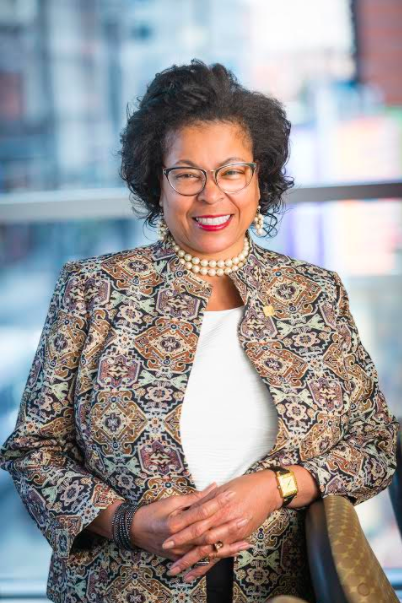Accelerating Racial Equity

In May, executive leaders at Fifth Third Bank shared their initial thoughts about the company’s responsibility to society, as individuals and as an organization, to stand firm against racism and inequality. Over the last two months, the Bank has reaffirmed its commitment to an equitable environment for its employees and the people it serves through various activities.
Stephanie A. Smith, senior vice president and chief inclusion and diversity officer, explained that the Bank has worked to drive ooutcomes that advance inclusion and diversity. “The time to change the narrative is long overdue. We have the opportunity and charge to establish a more inclusive and diverse reality, particularly for our Black employees, customers and community members,” she said. “It took our country 400 years to get to where we are and while systemic racism won’t be resolved overnight, we are committed to the journey to being a force of positive change.”
The Bank’s initiatives have included:
The creation of the Executive Diversity Leadership Council: The Executive Diversity Leadership Council is comprised of 15 senior leaders from various divisions of the Bank, eight of whom directly report to the Chairman, President and CEO Greg Carmichael. The Council’s main responsibility is to provide input, oversight and drive accountability for the enterprise wide initiative named Accelerating Equality, Equity and Inclusion. The program will focus its work on three important constituents- employees, customers and communities. And, while the larger focus is inclusive of all dimensions of diversity, there will be a specific and strategic focus on Black employees to ensure they understand that racial discrimination is not tolerated at Fifth Third and that their contributions are valued. The Council will guide the Bank’s monetary and human capital resources and actions to achieve and sustain measurable outcomes guided by the collective voices of all the of the Bank’s employees.
The introduction and availability of the Inclusion Toolkit: The Bank’s inclusion and diversity team in collaboration with other corporate partners, created a rich resource, the Fifth Third Inclusion Toolkit: From Awareness to Advocacy to help guide empathetic, supportive and sometimes uncomfortable conversations about the inequality and bias that continue to plague our nation. In the toolkit, the reader will find useful terms and actions they can take; from movie recommendations, to books and articles they can read, and other ally and anti-racism resources. The toolkit is also available to the public and can be accessed at 53.com/racialequity.
Holding Listening Sessions with Employees: Leaders at the Bank realized that the tension in the environment left many employees feeling vulnerable, confused, frustrated, and looking for an outlet to express themselves. The Bank’s inclusion and diversity team responded by collaborating with the African American Business Resource Group to introduce conversation forums, where employees had a safe space to share their thoughts, feelings and experiences. While the initial sessions were focused on Black employees, they evolved, and similar sessions were developed and open to all employees across the Bank’s 10-state footprint. Feedback from all sessions will help inform and guide the work of the Executive Diversity Leadership Council.
The launch of Unconscious Bias Training for All Employees: As part of the foundational journey to educate employees on the journey to create a more just, and equitable world, the Bank introduced unconscious bias training for all employees. Through a short collection of videos, employees gain more knowledge and awareness related to the impact of unconscious bias. Making employees aware of unconscious bias is the first step in helping to create conscious understanding of how these invisible biases impact their everyday decisions. This mandatory training provides some simple strategies to disrupt and mitigate the brain’s reliance on the automatic decisions that often result in unconscious bias. There are opportunities to learn about some of the most common biases in the workplace, which include race, gender, performance, age and more. The training will be sustained with additional tools and resources; that will continue to support and enrich the learning journey.
Over the next several months, the Bank will introduce additional initiatives that will drive positive change within its workplace and communities. To learn more about Fifth Third’s commitment to inclusion and diversity please visit www.53.com/racialequity.

